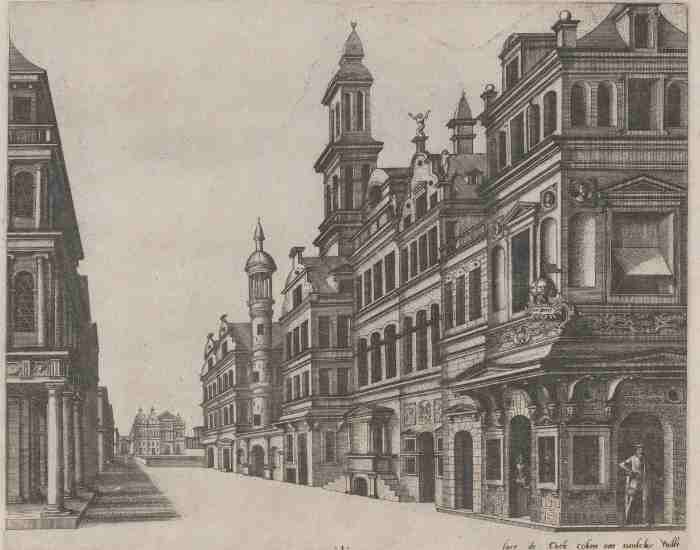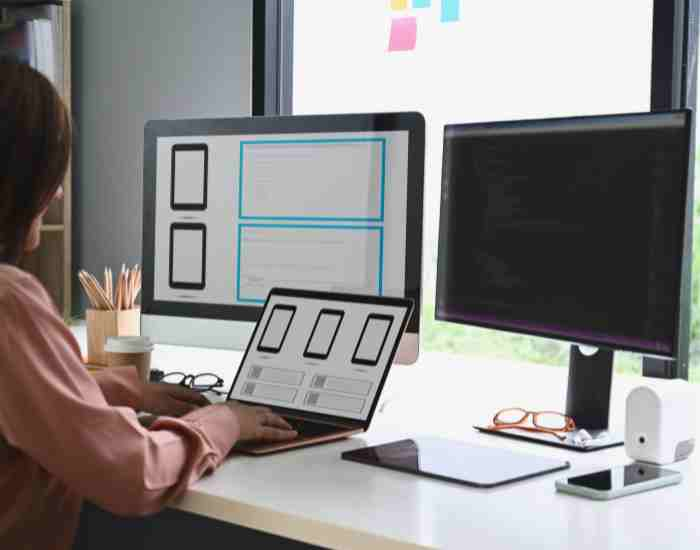Have you ever looked at a painting and thought that you were standing in front of it, wanting to reach out and touch it, imagining how it would feel to be inside that world? This sense of wonder, this sense of being invited to the world outside, is what perspective does in art perspective is the creator of the illusion, the one who makes it possible at all, for it is he who builds the false three dimensional space on the pure flat surface of the canvas or paper.
In this adventure, we look into the speakers own interest by taking the viewer through different aspects of perspective such as Emphasis, blending, tonal perspective and much more. We start from the essential parts from the horizon line, vanishing point and see how the artist has transformed the dull two dimensional drawings into screaming images which seem to be alive and urge the viewer to say that they are inside the image.
Our journey begins in the time of the Renaissance period, moving through time when the art world was forever changed, and then straight to the current time where our technology has changed the game. Witness firsthand how perspective was tailored to best suit the audience for the pure purpose of art and being able to grab the viewer’s attention granting them a new way of looking at art.

Perspective: A Gateway to Realism in Art
Perspective in art is nothing short of an alchemical transformation, where the ordinary flatness of canvas is ingeniously morphed into a window to another dimension. It’s the artist’s sleight of hand, employing lines that guide the viewer’s gaze towards a vanishing point set against the backdrop of a horizon line, thereby conjuring a scene brimming with realism.
Consider the experience of gazing down a long, straight road and noticing how it seems to taper into the distance until it converges at a singular point. This visual phenomenon is perspective hard at work, a pivotal technique in the artist’s arsenal to instill a sense of spatial depth within the confines of a flat plane.
Types of Perspective
- Linear Perspective: Here, we find geometry serving art, as straight lines gracefully converge at single or multiple vanishing points, neatly tied together by the horizon line. This method meticulously sizes down objects as they recede into the distance, anchoring them firmly within the realms of realism.
- Atmospheric Perspective: This technique owes its origin to the very atmosphere that surrounds us, where color and clarity are modified in order to mimic how objects recede into space and appear increasingly bluish and more diffuse. It’s a clever way of adding depth to a composition although no outlines are drawn.
- Isometric Perspective: Instead of forced meeting points like the lines of linear perspective, isometric perspective enjoys the glory of parallel lines that are always the same distance apart. This method also gives the artists another opportunity to portray pictorial space and volume in a different way and not through the use of a vanishing point.
The Development of Perspective Throughout History
There is important history of perspective during Renaissance. This was an age full of creativity and searching for realism. It was during this time that great men like Filippo Brunelleschi and Leonardo da Vinci came on the scene and used linear perspective as their magic wand to convert images from flatness to dimension. Their revolutionary masterpieces were not simply works of art but rather convincing proof of how pythagorean theorems could be employed to create realistic scenes on the surface of a flat canvas, thus changing the practice of painting forever. Thus, this period is believed to be the beginning of history of new artistic movements, where realism assumes a dominant role, and point of view is one of the important strokes in the works.
Tools and Techniques for Constructing Perspective
Understanding how to create the illusion of depth in an image is like unlocking a new skill in the development of your artwork. Perspectives begin locally always with eye level oppositely, the strategically placing of vanishing points and parallel lines that appear to converge within the dimension of the picture. The most basic tips for better perspective drawing for beginners is to start with a horizon line and then move to the location of the vanishing points. Such points act as invisible stars affecting the positioning of the objects in a scene so as to enhance the feeling of distance.
In this case, the viewpoint also becomes a secondary component in achieving this spatial perspective. Practising artists often look to the environment they are trying to recreate by depicting scenes that exist in the real world. This means that vanishing lines and pairs of perpendicular streets and roads, as well as buildings, are all drawn in relation to the horizon creating a realistic perspective that makes people want to look inside the artwork.
Digital Art and Perspective
With each passing day, artists are increasingly utilizing computer systems in developing their works. This is because modern applications are equipped with amenities that even an inexperienced artist can utilize to achieve straight lines. If, for instance, one needs to make a digital canvas, there are many options available to them. Using these tools allows for the exploration of complex arrangements in the art of perspective and allows any artist of any level the ease to carry it out.
For someone who has a lot of experience to start drawing out a keystone, they will more likely than not make a mistake that will make him warp his perspective into something unrecognizable and unnatural. Faulty vanishing points, misplaced orthogonal lines, and incorrectly drawn lines are some of the main reasons why such illusions come into play. To avoid common errors such as these, take time to continuously double-check your alignments, and practice drawing one-point perspective scenes with simple designs. After one has a robust reputation to uphold, more challenging compositions can be undertaken without worrying about the lines.
The Importance of Point of View in Composing and Telling Stories
Effective composition in a painting goes beyond just visual explanations; it is about exploring the inner meaning behind the story. As unnoticeable as it might be, it remains the key element for the success of any story: point of view. It has a very important role in the telling of the story because it positions the viewer and the involution into the delightful compound of the tale. Artists create recession in their pictures by the arrangement of vanishing points, thus constructing a system of perspective which brings the viewer closer to the plot. This particular use of perspective primarily provides an arrangement of the physical elements in the scene, but more importantly enhances the dramatic effectiveness of focal features of the narrative. There is more to what meets the eye, and this slight shift of the plane onto the two-dimensional mural, implies a greater action that continues outside the borders of the picture being viewed.
Whenever we view a piece of art, the aspects that stir up emotions within us are oftentimes determined by the perspective that that piece tells the story from. Choice of perspective whether it’s a high viewpoint or low viewpoint can alter the meaning of the painting, either covering it under darkness or exposing it too bright light. The way one moves their head to view the art piece also changes the way the piece is understood. For instance, a person observing a scene from a height might make the viewer feel all-knowing or indifferent, putting them in a role where they are observing the situation. On the other hand, embracing oneself to a lower viewpoint gives a sense of superiority or dominance towards the art piece where one is ‘always looking up’ enhancing the scope of the topic.
Real-World Applications and Famous Examples Perspective is not limited to a mere canvas, but rather the wider global perspective of perspective that enables an individual the ability to create more. In photography, perspective determines the focus and the manner in which an individual views a specific still image. The same is for video, which relies on the perspective through the camera lens. For video, however, it is more than just that, as it is used in storytelling through the use of angles that help bring out emotion, add to rhythm and utilize imagery to enrich the story. The same applies for video games. They employ perspective to create worlds and enable their players to rotate through the and interact with the world the game has rendered in front of them, allowing only two dimensions. These usages also raise the importance of perspective in art; every art subfield utilizes ‘it’ for more purposes, including increasing degrees of fascination, movement, or immersion.
Iconic Artworks That Mastered Perspective
Works of art that have remarkably mastered the use of perspective can be traced in the chronicles of art history, but few stand out as prominently as Masaccio’s Holy Trinity and Raphael’s The School of Athens. One of Masaccio’s fresco paintings, executed in the early fifteenth century, is the foremost example of linear perspective application, whereby an astonishing suggested spatial and volumetric reality penetrates the firm borders set by a church wall. The artwork demonstrates, indeed, one’s brilliant technical skill, but moreover the viewer is drawn into an active story that is focused on the interrelation of the heavenly and the earthly, but all is viewed through the ancient technique of perspective.
Equally, Raphael’s The School of Athens – a fresco painting in that adorns Vatican City – is a perfect example of perspective that embodies the spirit of Renaissance. As the viewer looks through the image, their gaze is drawn to the best thinkers of ancient world in the vanishing point which was the composition’s zenith and was achieved through the use of a one-point perspective by Raphael. This not only harmoniously balances the arrangement, but it also suggests the coming together of philosophy and science into one singular focus. Both of these works of art stand as great examples of how perspective is used in a painting with the aim of bridging the viewer into the image enabling them to feel something, and why it has always been a powerful tool in the history of development of art.
FAQs
What is the easiest type of perspective to start with for beginners?
For first timers in this art crafting exercise, then there is a need to say that one-point perspective is the first step of building up depth and dimension. Driven by one single backbone of a vanished point in the center of – it manages to reduce the lives of angles and lines hence it acts as a very good starting platform for beginners. It learns how lines in the real world tend to converge towards a common place on the horizon line, and therefore provides fresher in easily understandable way to show volume and space.
How do artists decide what kind of perspective to use in their piece?
Choosing the right perspective is the same as deciding what colors to paint with, and it varies from artist to artist. It depends on many things, including the particular scene that the artist wants to portray, the mood or feeling that the artist wants to communicate, and the story that the work represents. It could be that the artist wanted to use a linear perspective or wanted to convey an atmosphere perspective instead, they proceeded to do so in order to complement their storytelling further.
Can perspective be applied to the abstract works?
Of course, perspective does belong in the generic category of abstract art as a form of connection. A picture can even be composed in such a way that certain objects and scenes are attempted to be dimmed into oblivion, and in such instances, perspective suggests a picture containing multi-dimensional space as its skeletal structure. It creates an illusion of movement in the frozen white canvas by making the viewer perceive the painted ideology through the eyes of the artist. In this case, perspective does not serve its primary purpose but rather assist in creating the illusion of depth in an endless world of abstract art.
Conclusion
Perspective significantly expands an arsenal of artist tools and it should be understood as the tool. Art in his forms includes depth, realism, and emotion. Beside atmospheric effects those methods include geometrical linear perspective which geometrically shrinks the space and literally urges the viewer to step into the painting and look through the window in another world. We recommend you to use perspective in your artwork, test its possibilities and open up new horizons. When creating a bright urban space, city or a calm natural landscape it should be used more than slavery feeling that it will help to add the desire into your works. It is important to note that when working with perspectives the aim is not simply to reproduce space, aim is to place the viewer in a position to ‘stretch’ their imagination, make them see a vast distance behind the flat image that they see.
More Post




